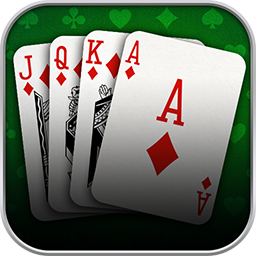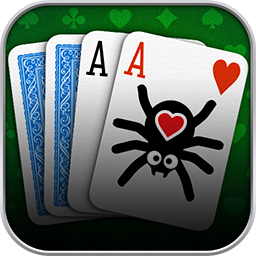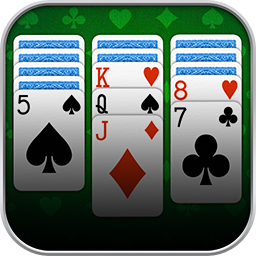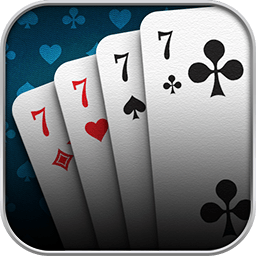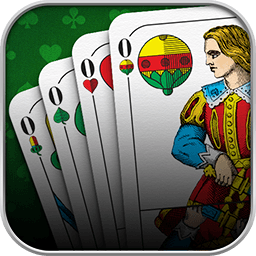You do not have to know the answer to every question – you just need to know where to find it. Find out about Spider terms quickly in this alphabetical overview! We collected the most important terms for you in the glossary. Check our Spider manual for details.
1 Suit:
The variant Spider 1 Suit uses 104 cards of the same suit. It is the standard mode of a free table at the Spider Palace. Also, it is the most relaxed mode suit-wise, since one color cannot block the other one. When creating a table, you can select the custom rules Spider 2 Suit and Spider 4 Suit instead.
2 Suit (Custom Rule):
Use this custom rule to activate Spider Solitaire 2 Suits. In this mode, the 104 cards occur in two suits instead of one suit. That makes the game more challenging. In our fourth Spider Lesson, we explain more on how to play Spider Solitaire with 2 suits.
4 Suit (Custom Rule):
Use this custom rule to activate the popular variant Spider 4 Suit. This game mode is much more challenging than playing with one or two suits!
Custom Rules:
When creating a table at the Spider Palace, you get to set up the game as you please. We offer the rules 2 Suit, 4 Suit, Joker, Undo Off, Fast, Relaxed, Easy, Scorpion, and Training.
Deck:
This term refers to a complete set of playing cards. In Spider Solitaire, that equals 104 traditionally French-suited playing cards with each of the 13 ranks occurring eight times. The basic Spider game uses only one suit, so that each card occurs eight times.
Easy (Custom Rule):
Using this custom rule, you can distribute cards from the stock even when tableau piles are empty. That is impossible in standard mode. (When additionally using the custom rule Scorpion, there is a slight variation to this rule: You can now play any card onto empty tableau piles. That is forbidden in standard Scorpion.)
Fast (Custom Rule):
This custom rule shortens the standard time players have to solve the game in one round.
Foundation:
This is the area with eight empty panels at the beginning of the round. These are the spaces for your sequences. Once a sequence is complete, it will automatically move to the foundation. When you fill all eight foundation piles, you solve the round.
Joker (Custom Rule):
With this custom rule, an additional button showing the Joker symbol appears on the playing field. Each player can use up to three Jokers, and this is how it works: You select a tableau pile that will automatically receive a matching card. This card will move from its position on the playing field to the selected tableau pile. When you solve a round, unused Jokers add bonus points to your total score.
Patience:
Spider Solitaire is a member of the patience game family. The word is derived from the French language and might point to the game’s probable origin as an exercise in patience. Patience games are also referred to as solitaire games. Both are umbrella terms for many related yet different games. At the Spider Palace, you can play Spider and Scorpion. Check out the Solitaire Palace for Klondike and Easthaven.
Points:
At the Spider Palace, any move you make scores points – either positive or negative ones. Depending on how efficiently you solve the game, you might receive more or fewer points. This way, solving the same game setup becomes comparable, enabling you to compete with fellow players.
Ranks:
There are 13 card ranks in Spider Solitaire. Their descending order is King, Queen, Jack, 10, 9, 8, 7, 6, 5, 4, 3, 2, and Ace. A one-suited row of cards in that complete order is a sequence.
Relaxed (Custom Rule):
When using this custom rule, the entire tableau is dealt face-up. That makes the game easier and more relaxed: You can see where the crucial cards are in the tableau and can thus free them strategically. (When additionally playing Scorpion, there is a slight variation to this rule: Only one additional tableau pile is revealed, not all of them.)
Round:
At a table in the Spider Palace, you can play several rounds. Each round’s scores are collected to determine the total score and winner of the table. A round ends either when all players solve the game, give up, or when the time is up.
Scorpion (Custom Rule):
This custom rule switches the game to Scorpion Solitaire. There are differences between the two modes concerning setup and the rules in the tableau and the stock. We explain them in detail in a dedicated Spider Lesson.
Sequence:
A sequence in Spider Solitaire is a one-suited, correctly sorted, and complete group of cards. The cards must be sorted by the descending order of ranks, with each rank occurring only once. You must sort all cards of the tableau and the stock into sequences to solve a round of Spider. Once a sequence is complete, it will automatically move from the tableau to the foundation.
Solitaire:
See Patience.
Stock:
At the beginning of a round of Spider, 50 cards are placed face-down as the stock pile. During play, you can draw ten cards from the stock at once, which will be added and revealed to the tableau piles, one stock card per pile.
Suit:
Spider traditionally uses French-suited playing cards. Thus, the suits are Clubs, Spades, Hearts, and Diamonds. In Spider, you can choose to play with the 104 cards in one, two, or all four suits. See 1 Suit, 2 Suit, and 4 Suit.
Table:
At the Spider Palace, you can play Spider or Scorpion Solitaire at different tables. The tables vary concerning the number of players and rounds, player requirements, and selected custom rules. When entering the Palace, choose the table that sounds best! A table ends when a predefined number of rounds is finished.
Tableau:
At the beginning of a round, 54 cards are dealt to ten piles in the middle of the table, the tableau. The first four piles contain six cards, while the other six piles contain five cards. The top card of each pile is revealed. Here, you must move the revealed cards from pile to pile to form sequences gradually. You can also move cards from the stock to this area.
Tableau Piles:
These are the ten piles of cards that are filled at the beginning of the round. Here, you move, add, and lay down the revealed cards to gradually form sequences. When you remove all revealed cards from a pile, its new top card is revealed. You can only move a card from one pile to another if the moving card is one rank lower than the target card; no gaps allowed. The same goes for moving several cards at once. If a tableau pile is empty, you can place any card there.
Training (Custom Rule):
When enabling this custom rule, the table will not count for the league – neither points, Chips nor the rating. But you always keep collecting experience points.
Undo:
Use this button in the playing field to revoke as many moves as you want, one move at a time. But careful; each use generates minus points!
Undo Off (Custom Rule):
Disable the undo feature with this custom rule. You now have to see your decisions through to the end of the round. That makes the game a little bit harder.

